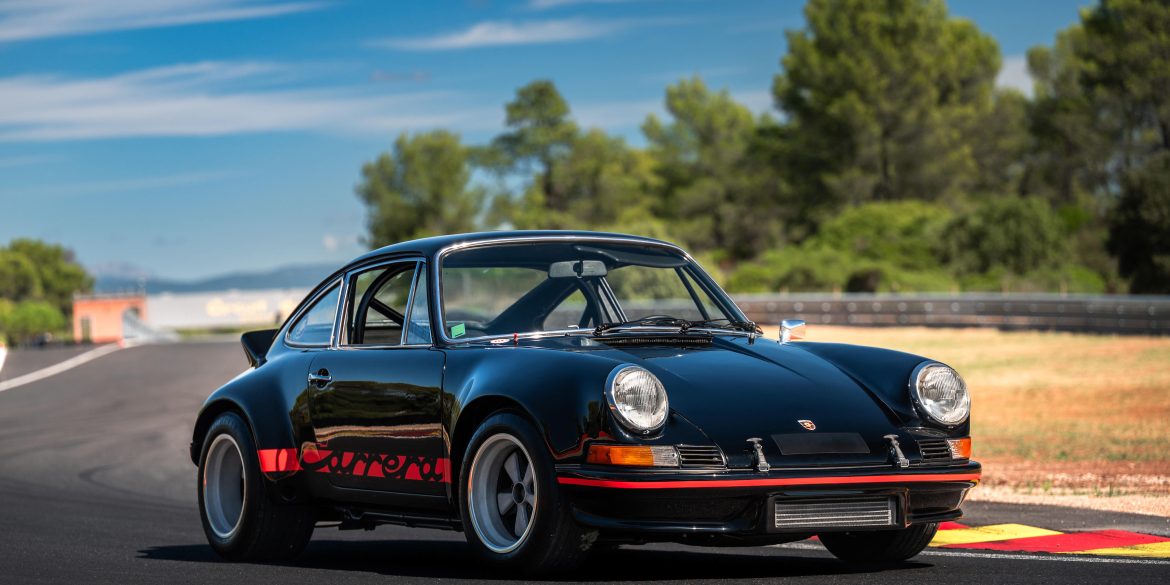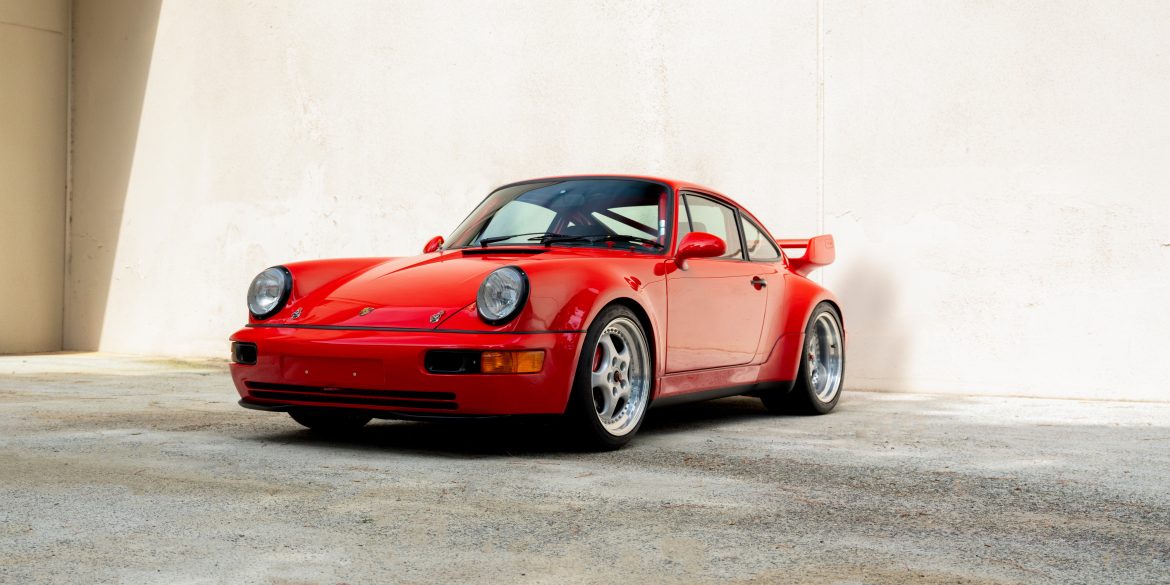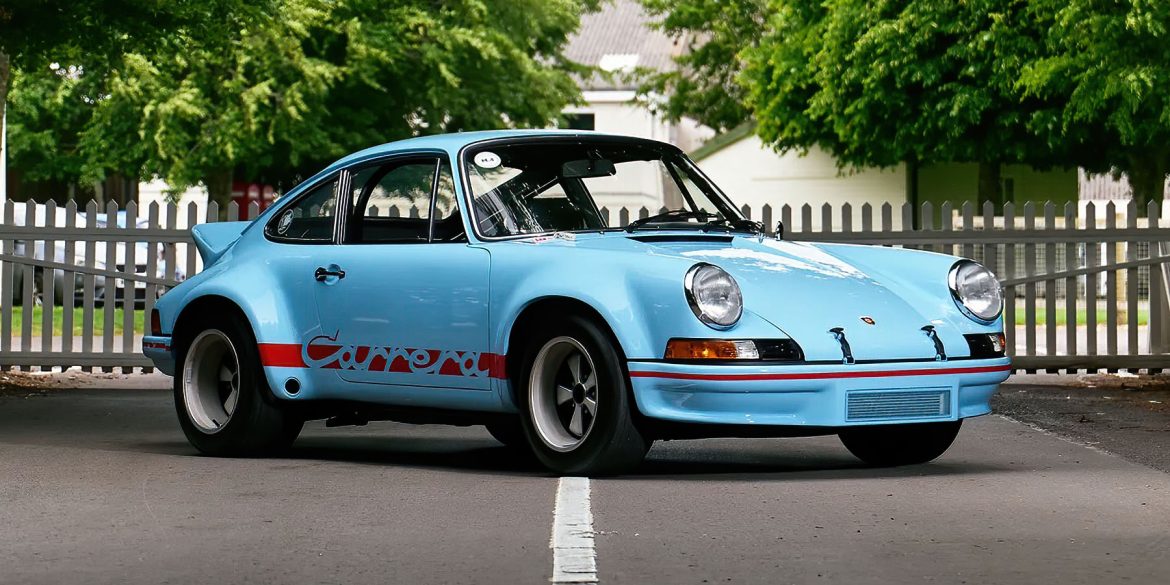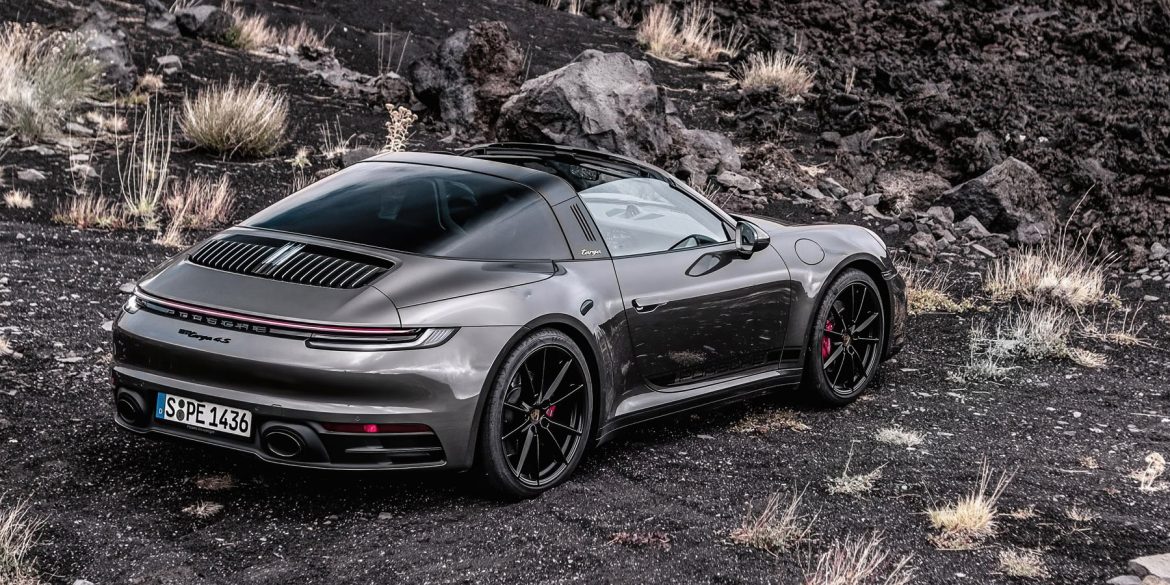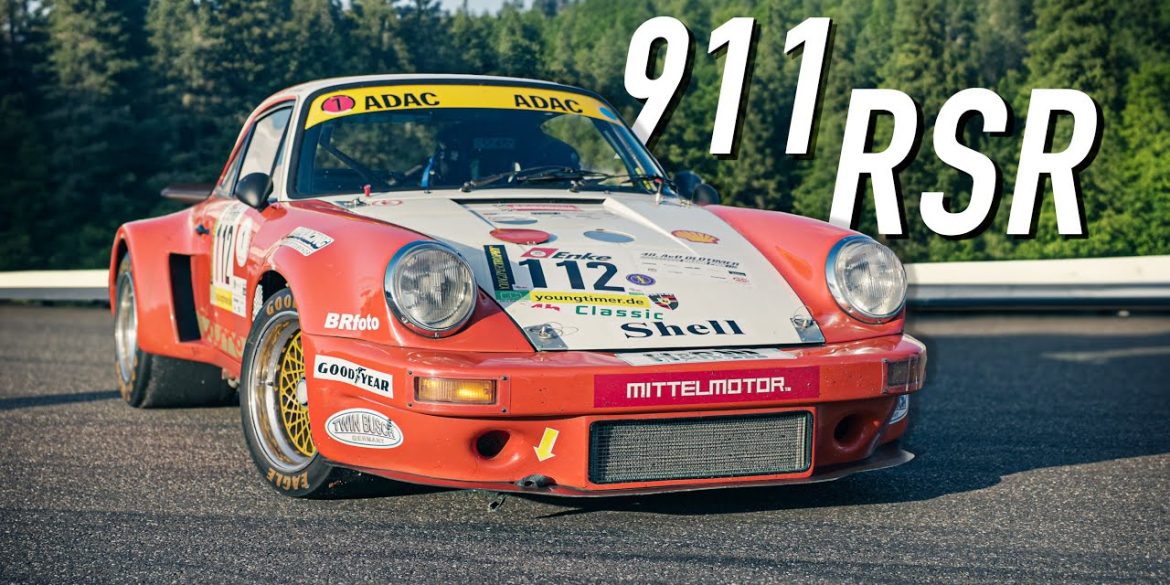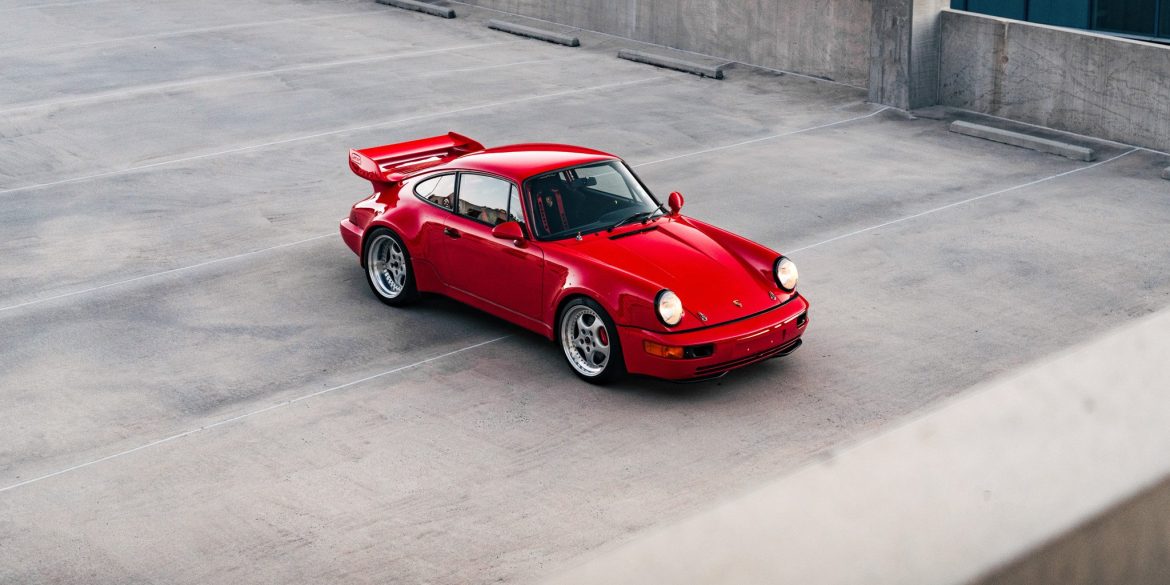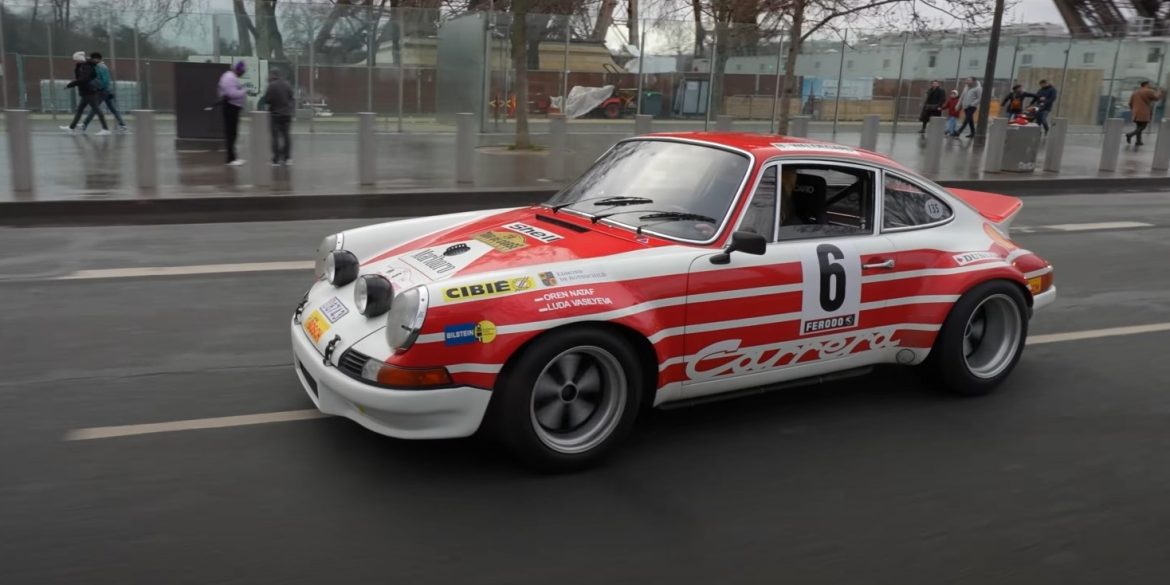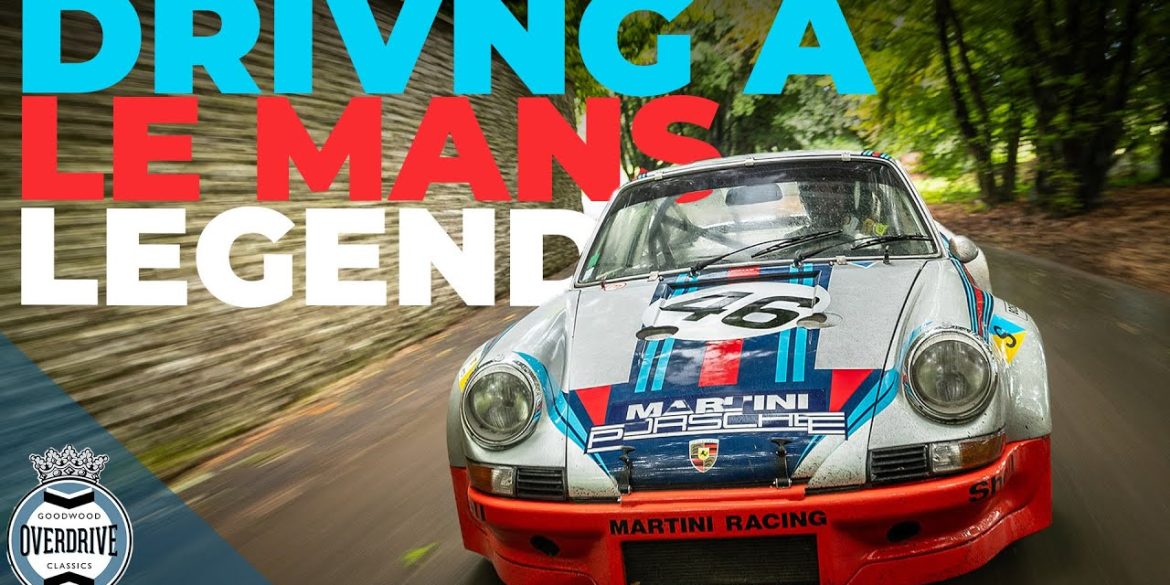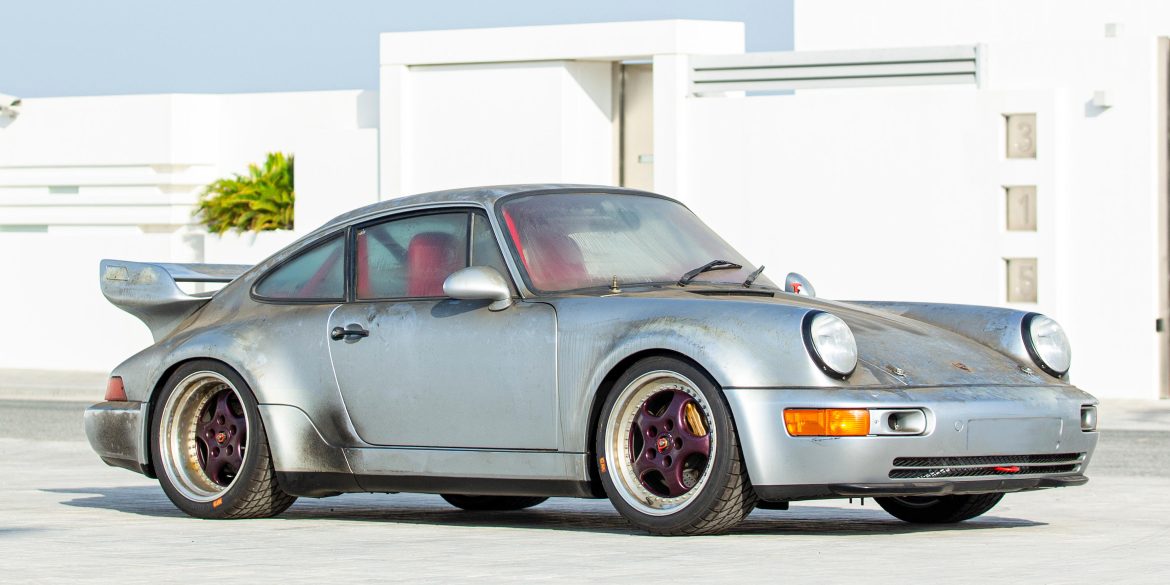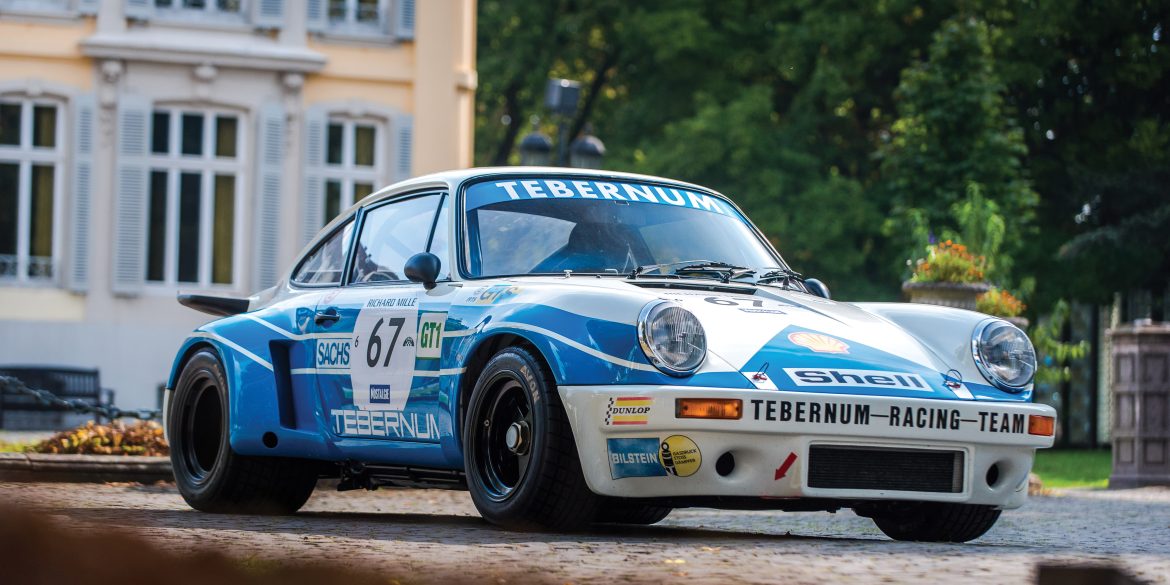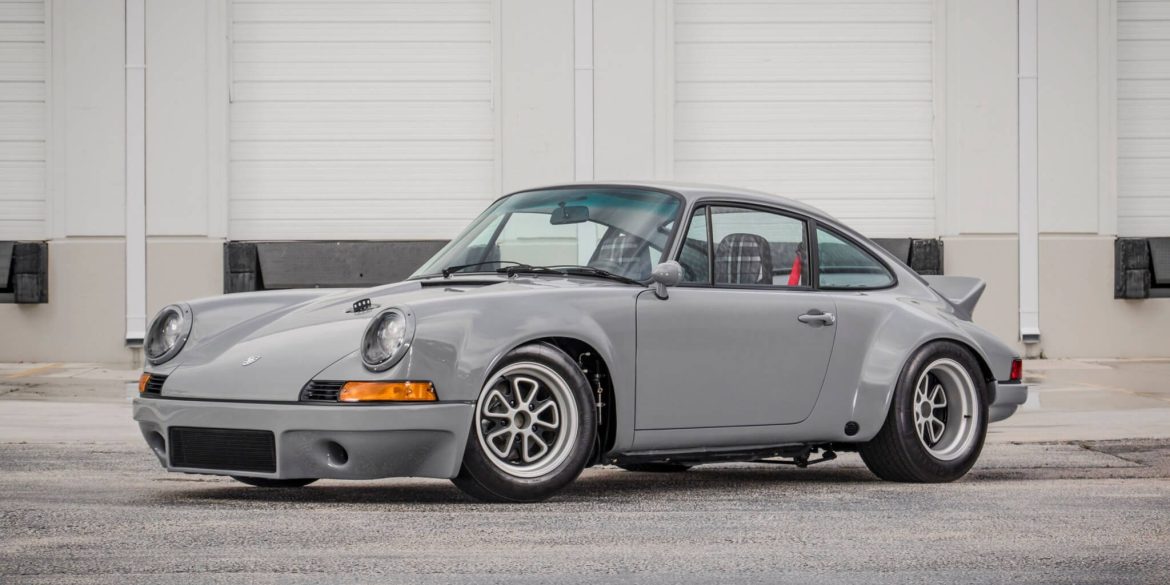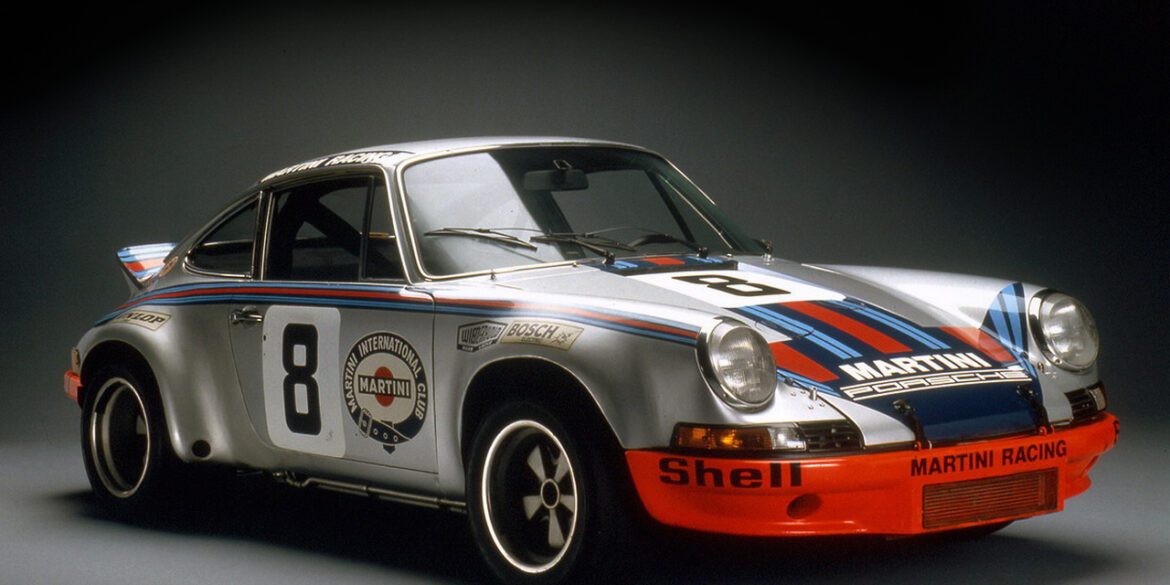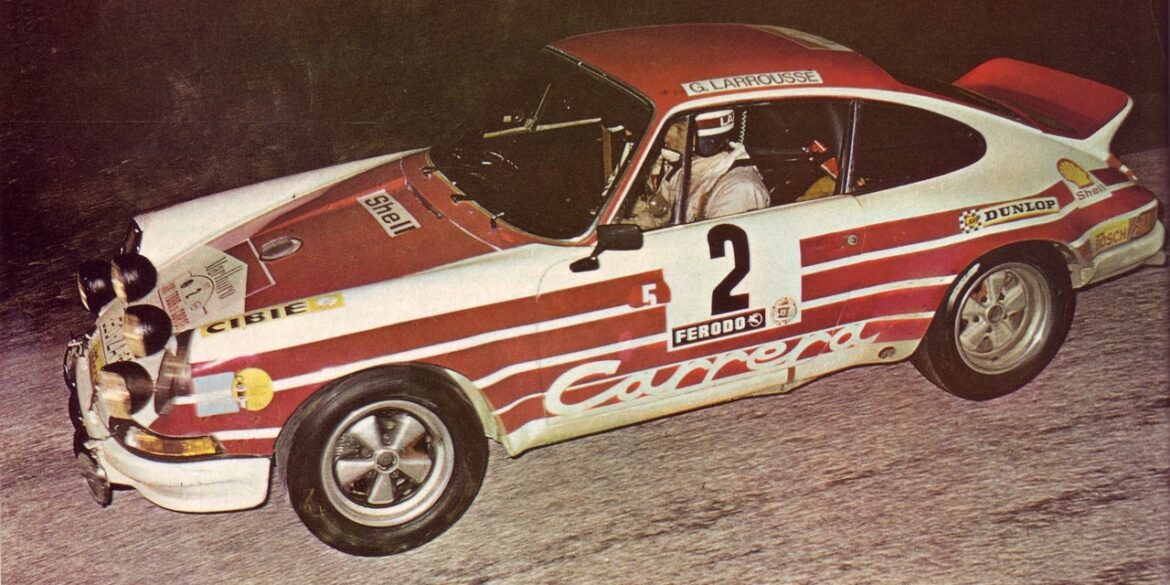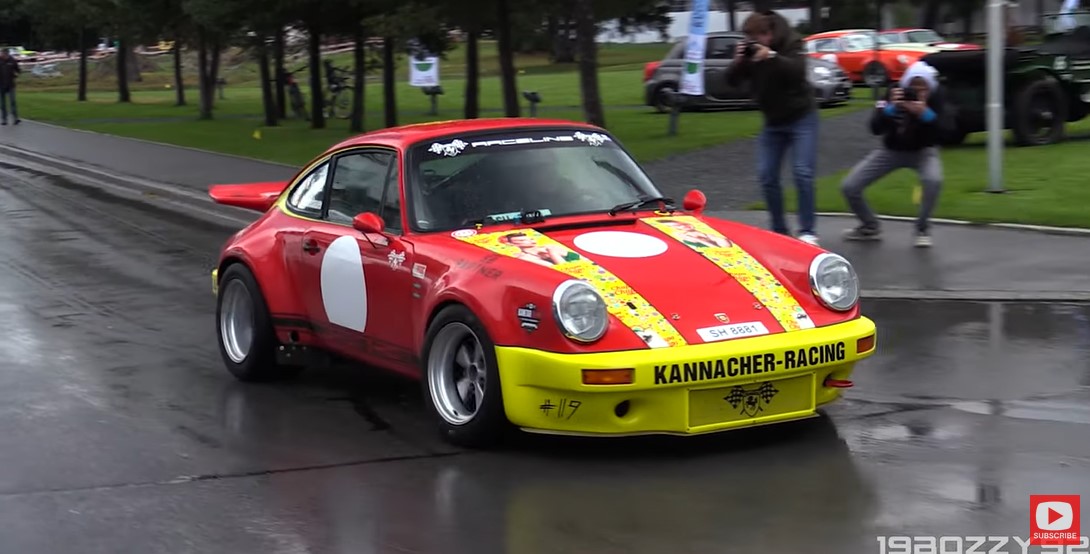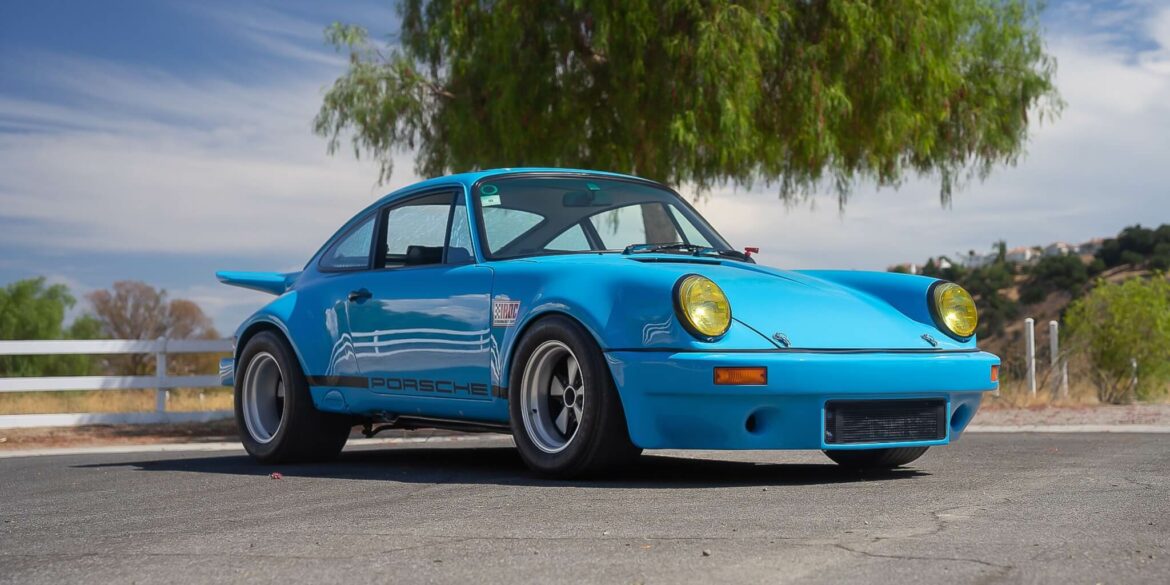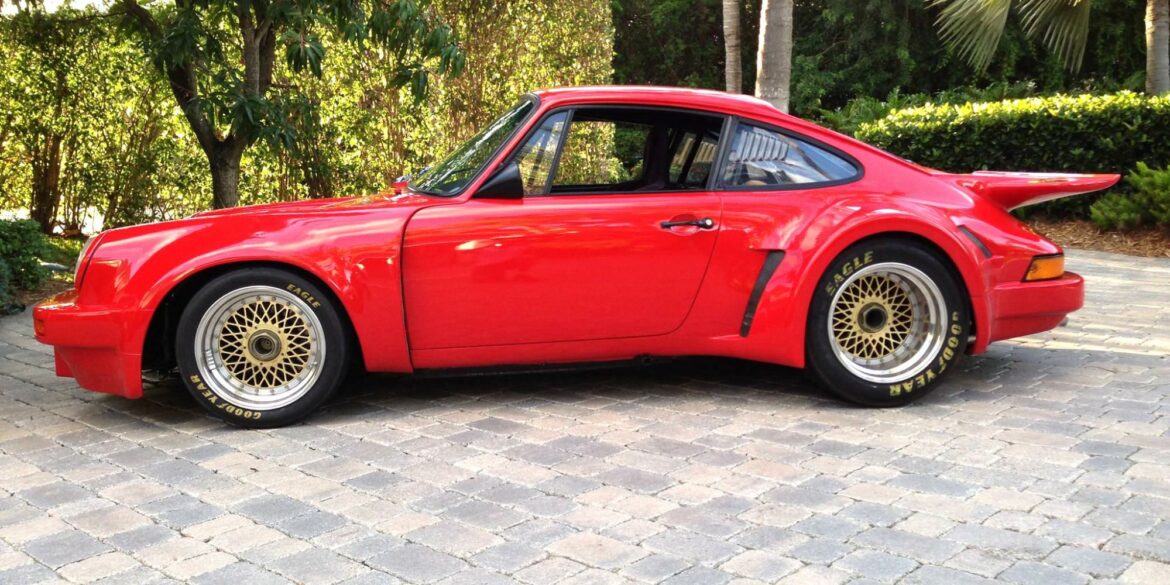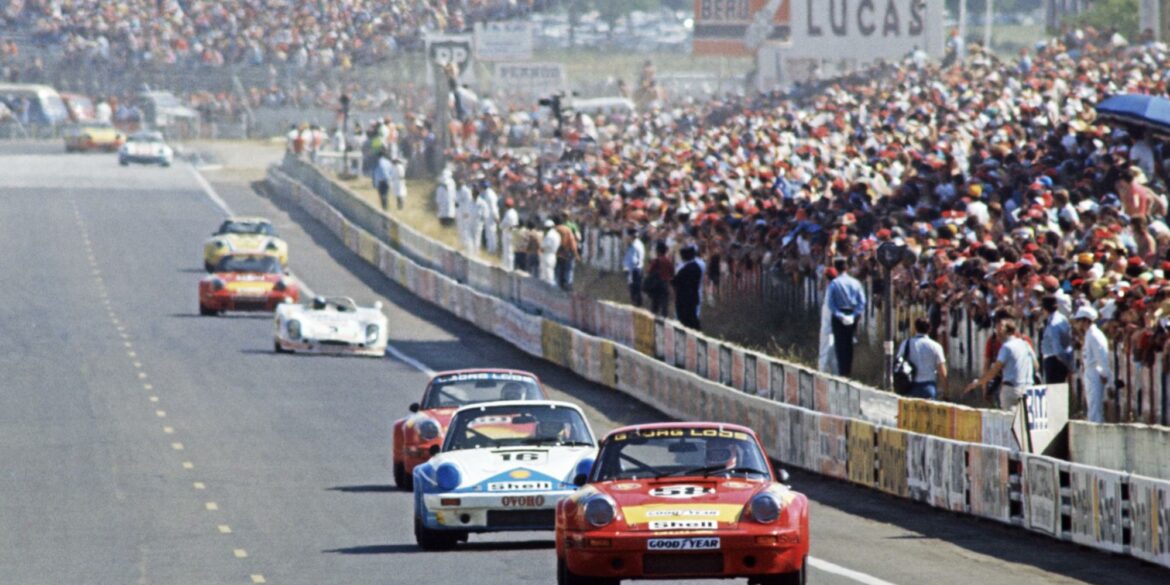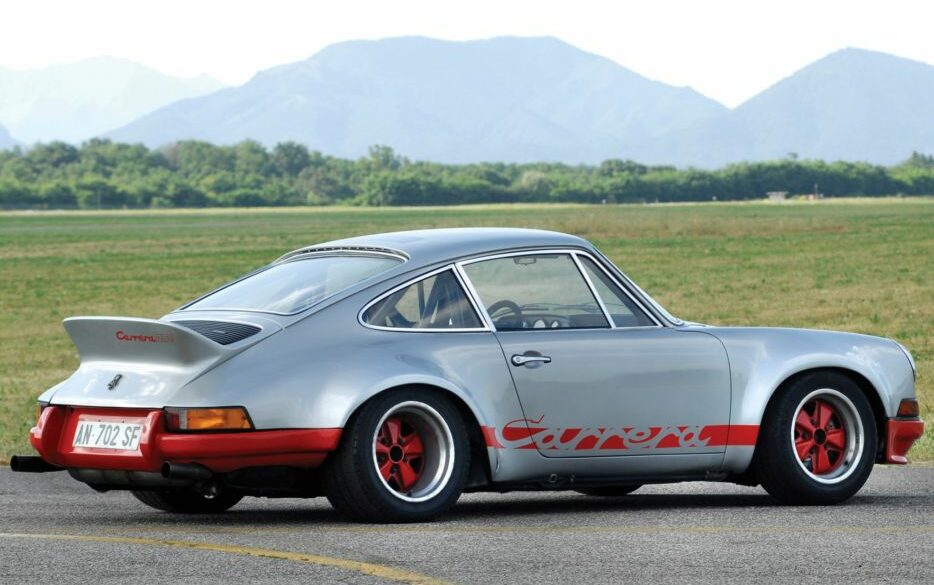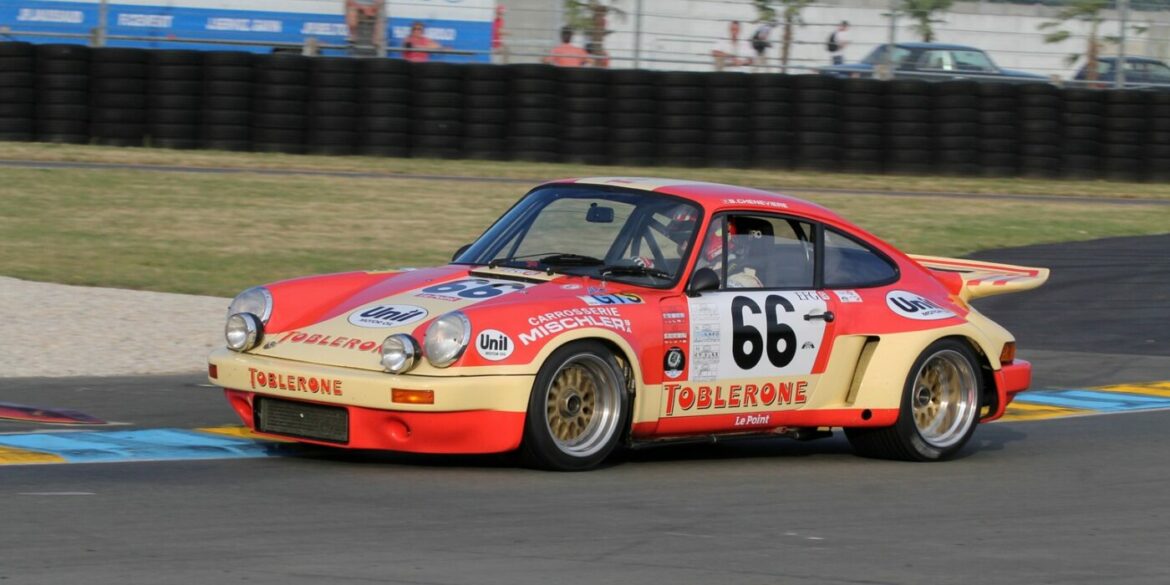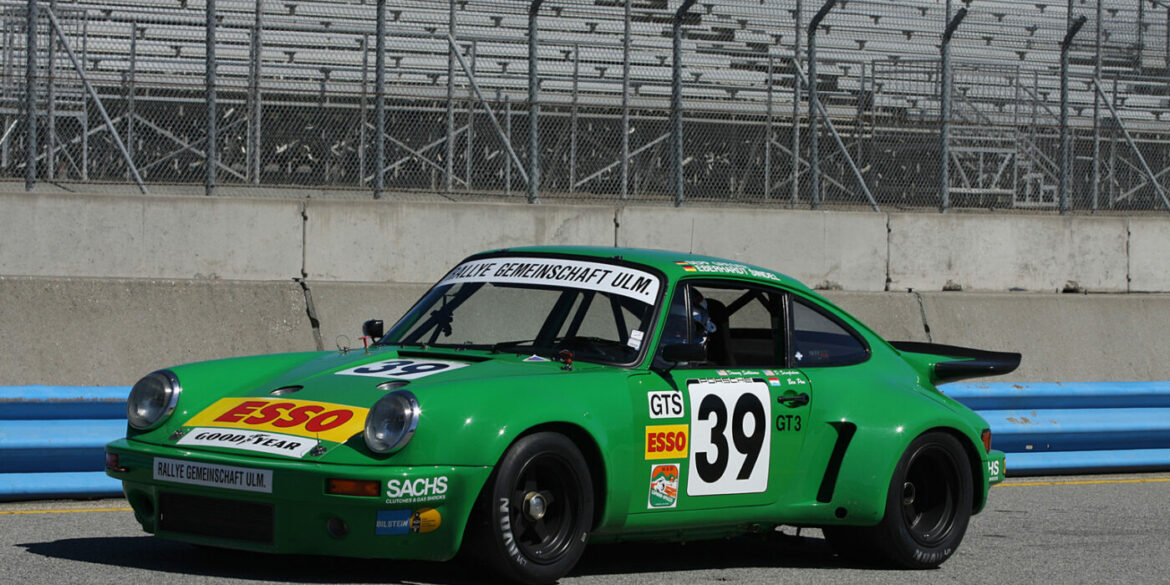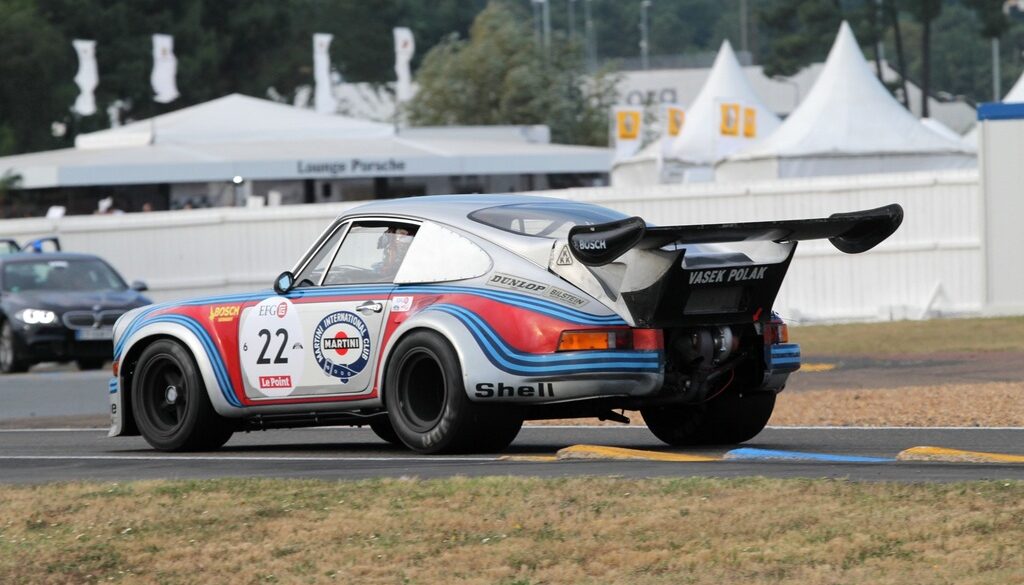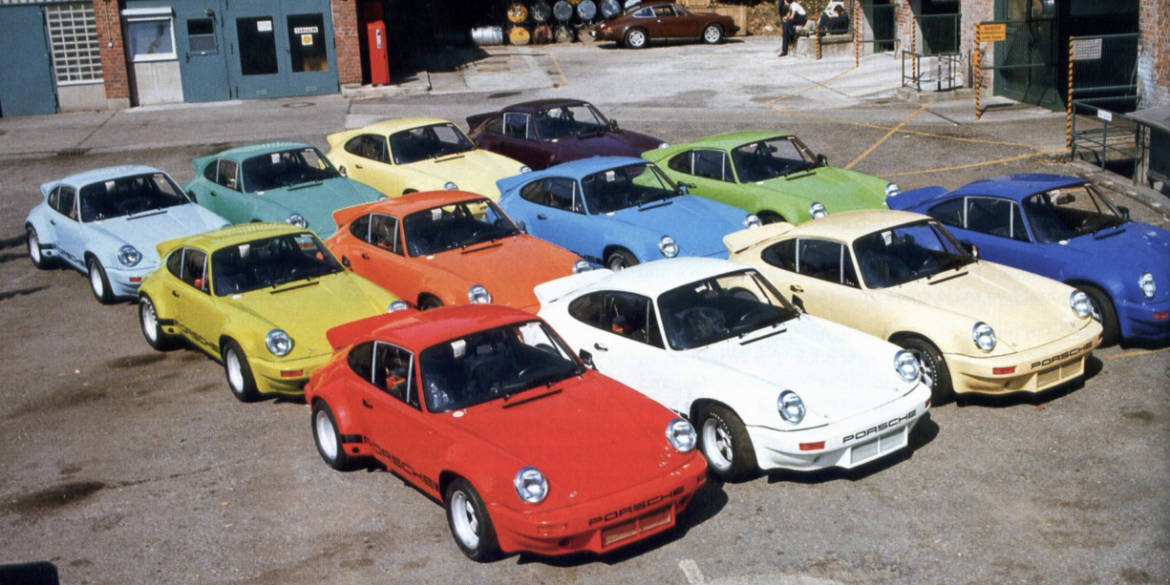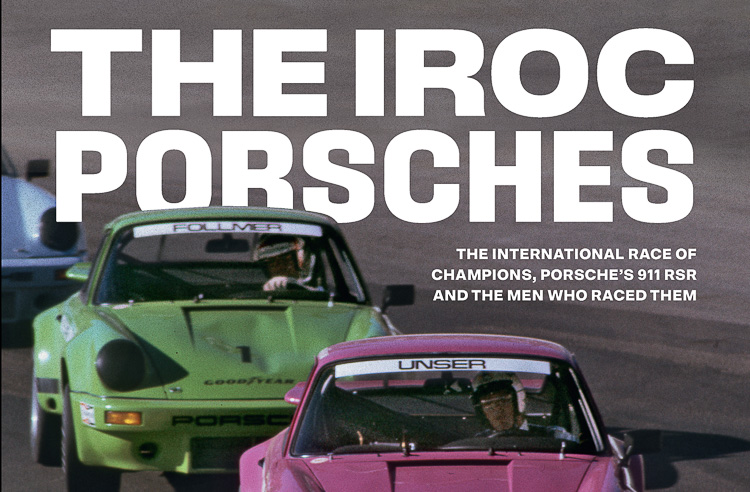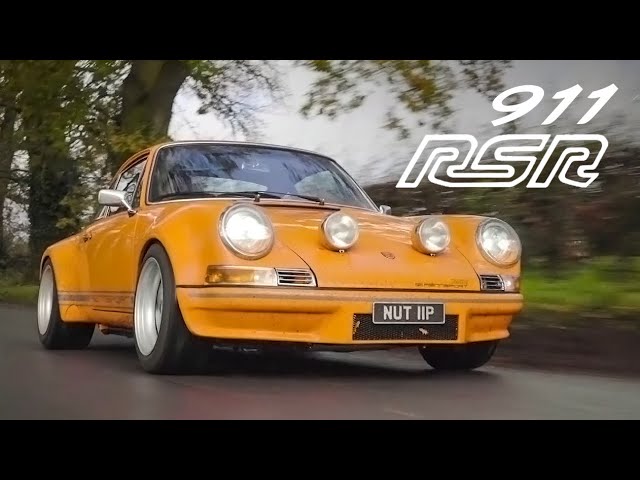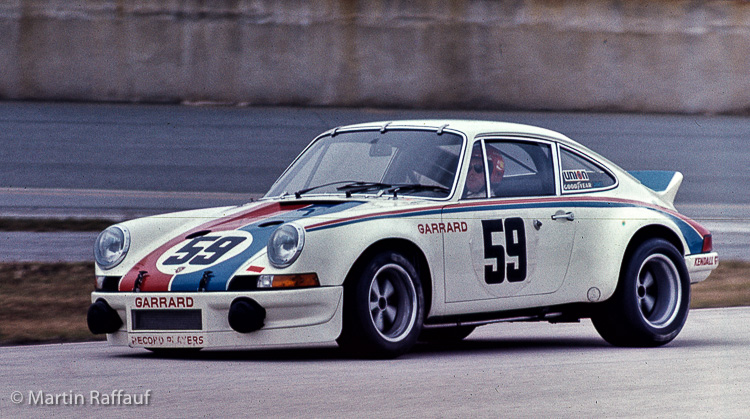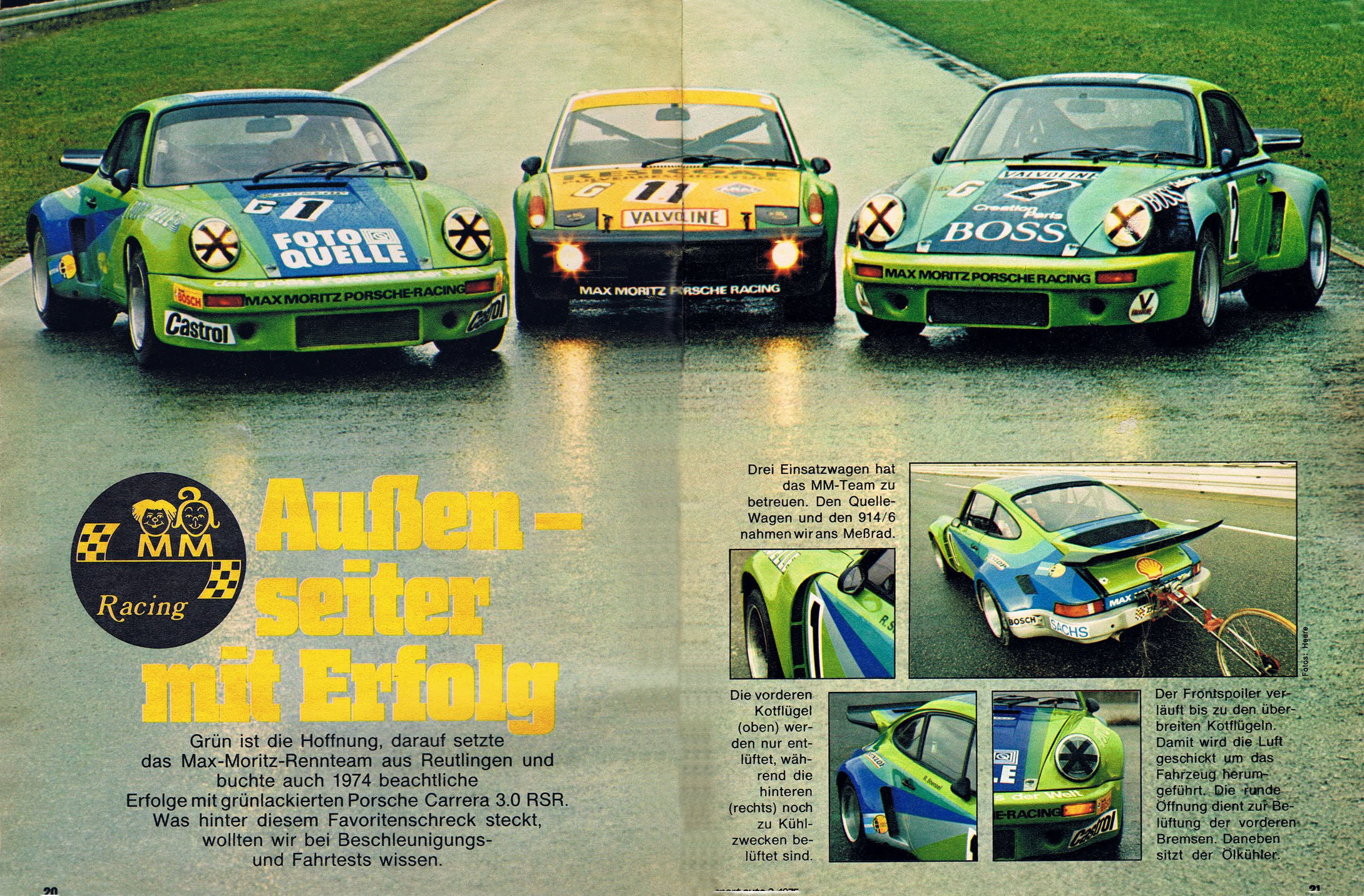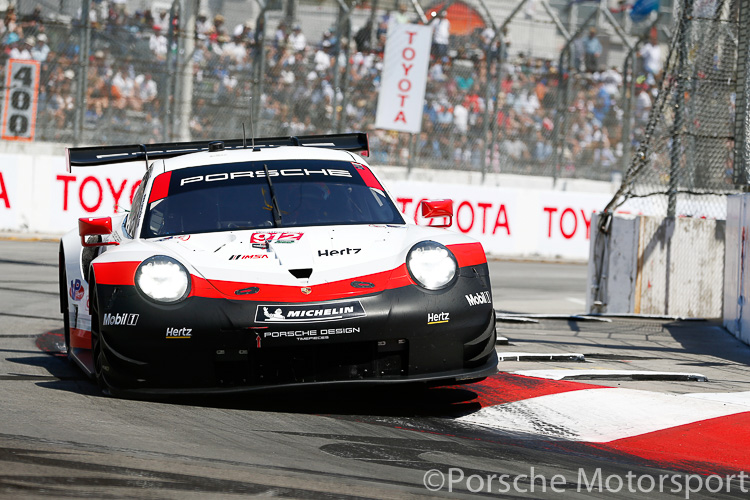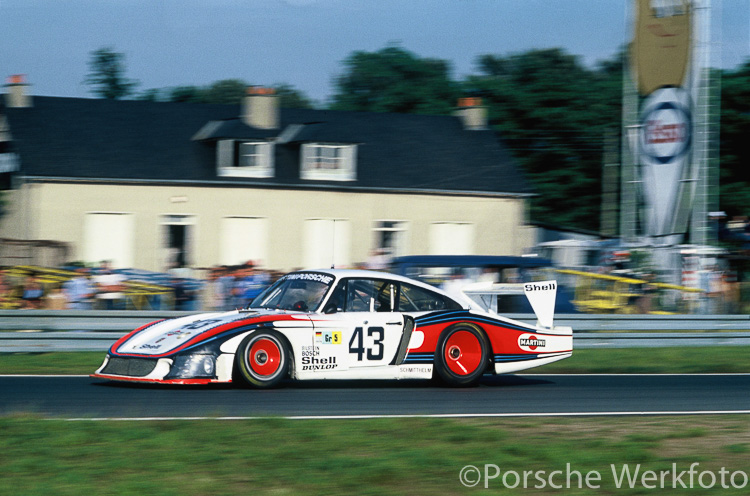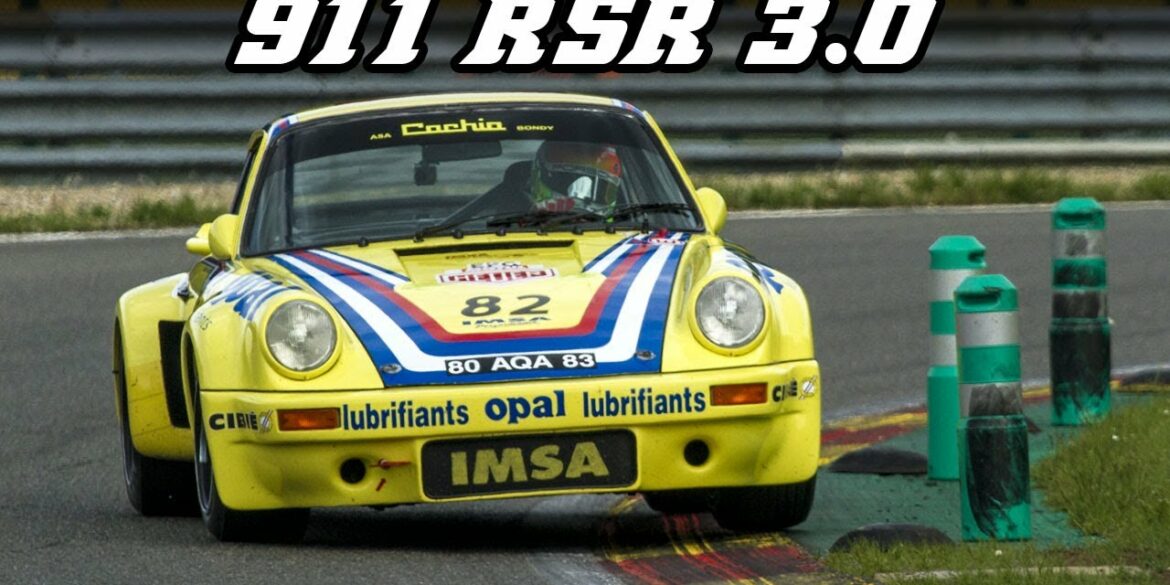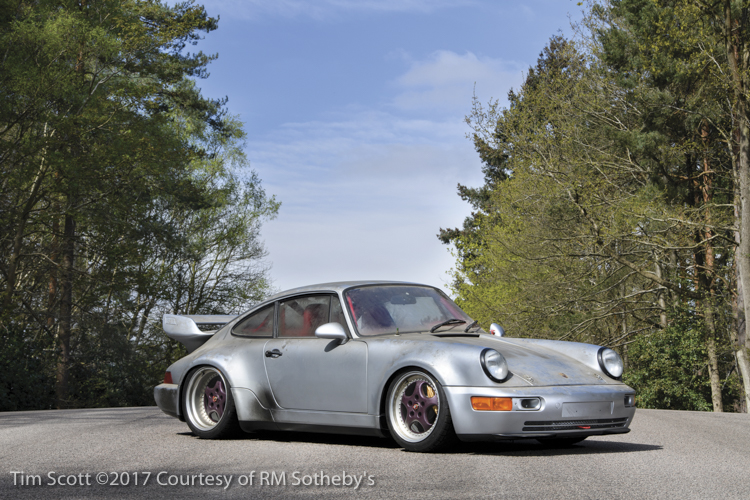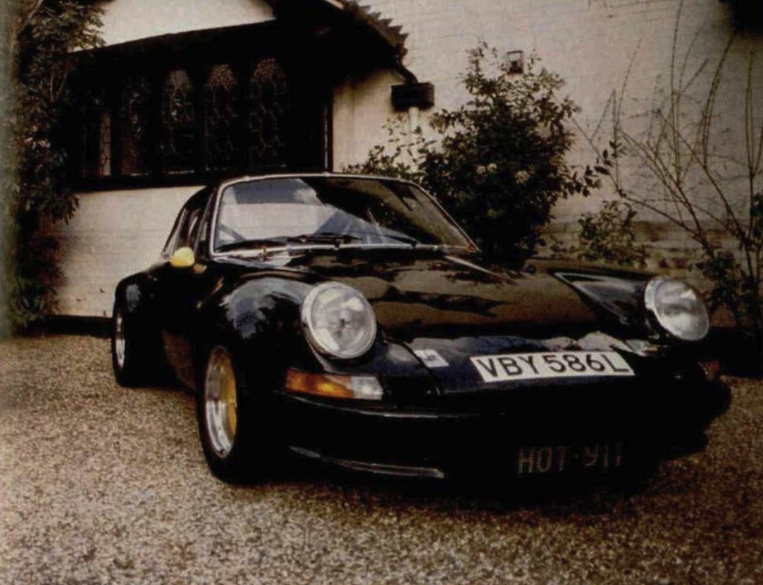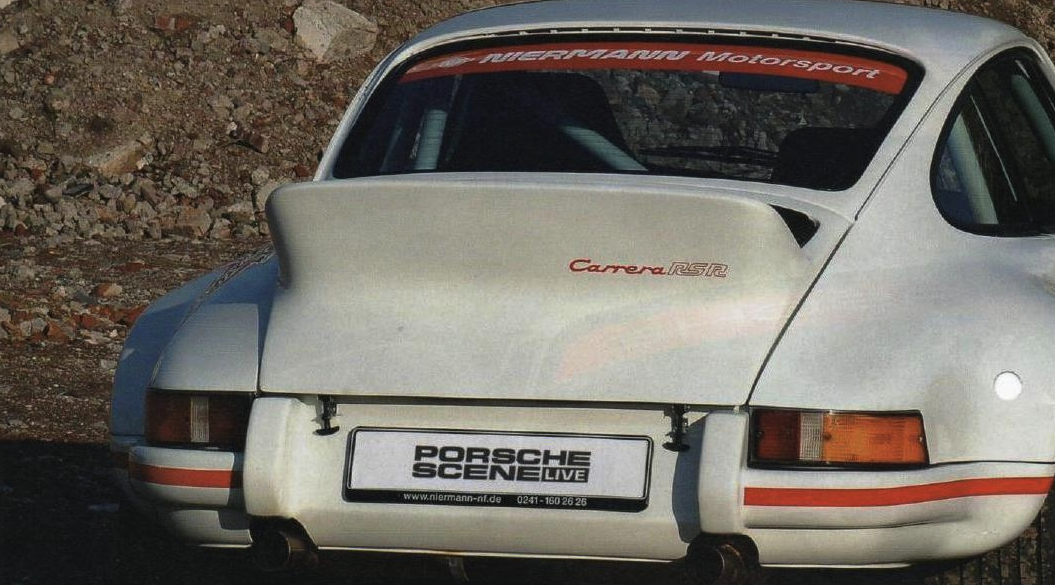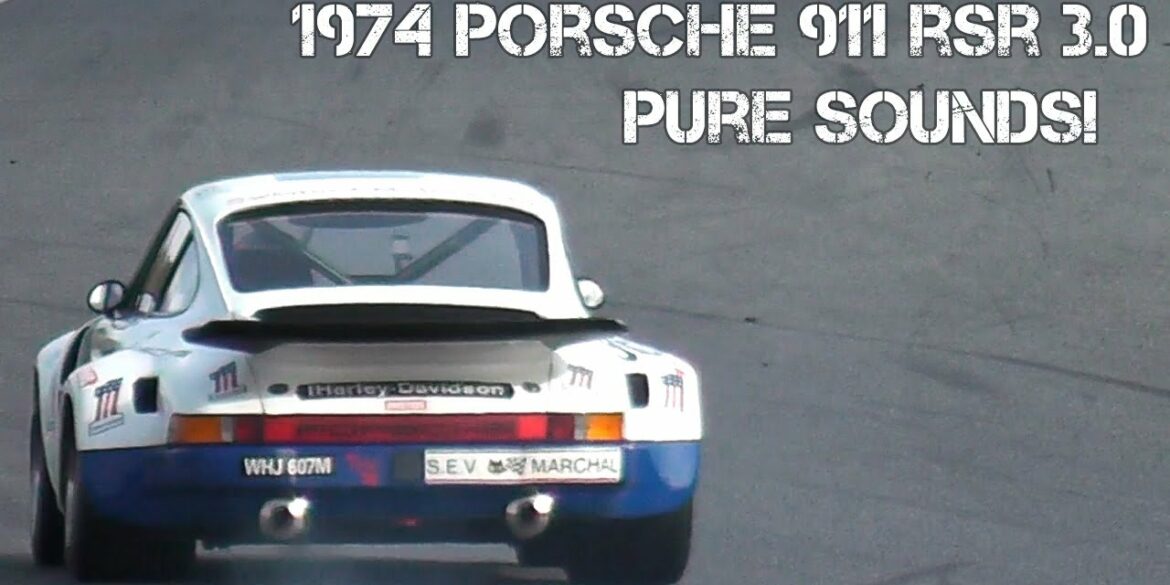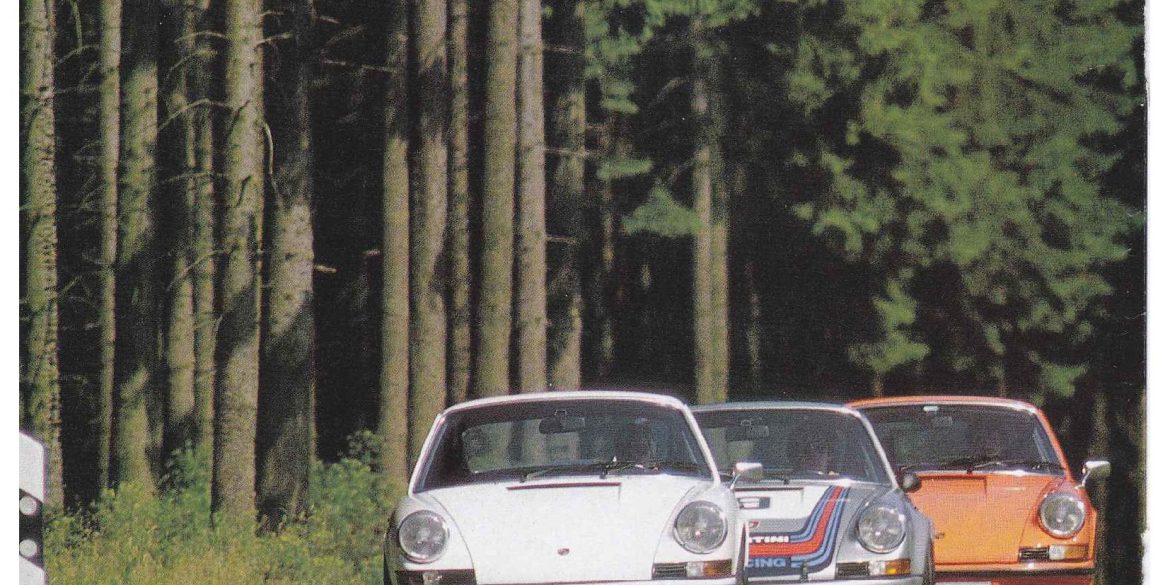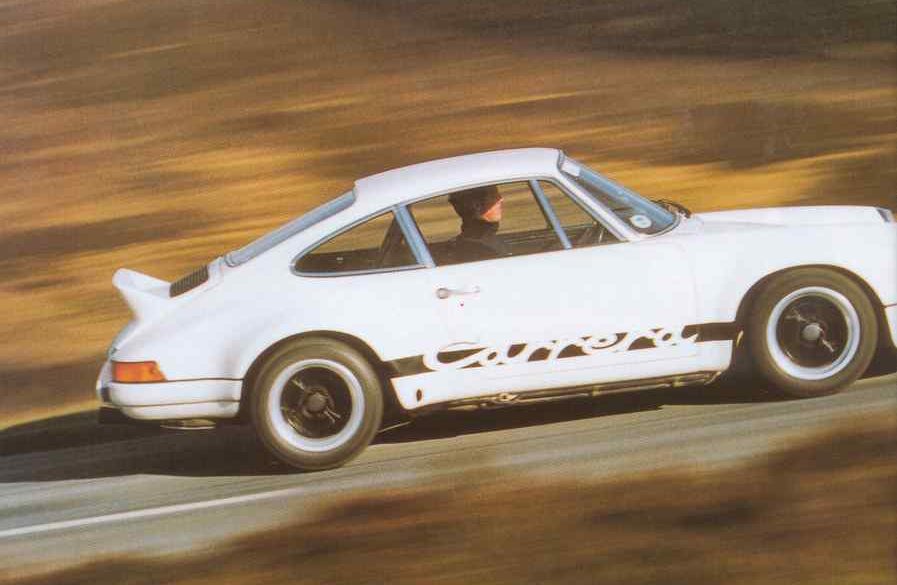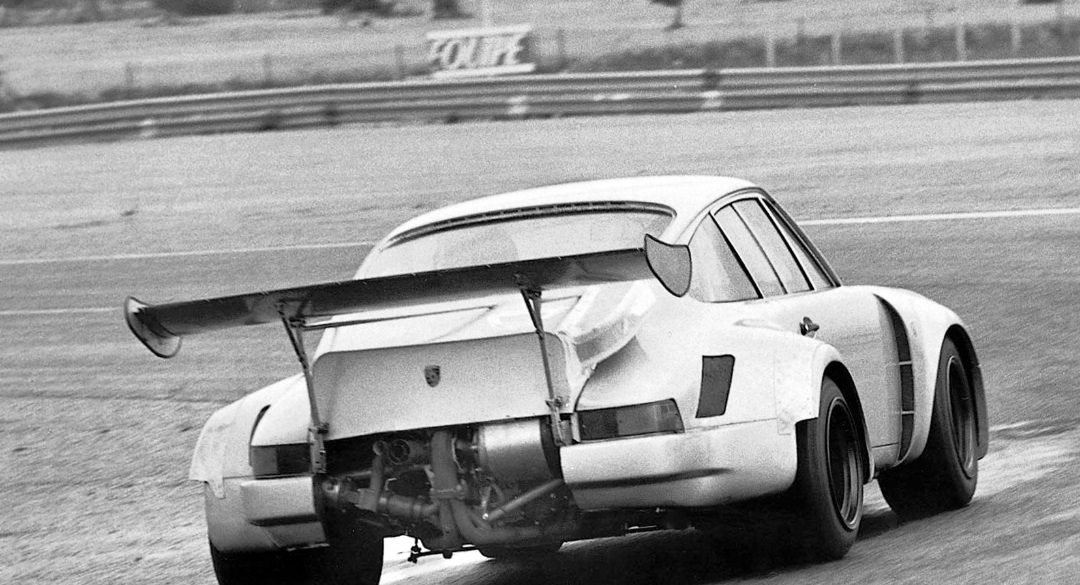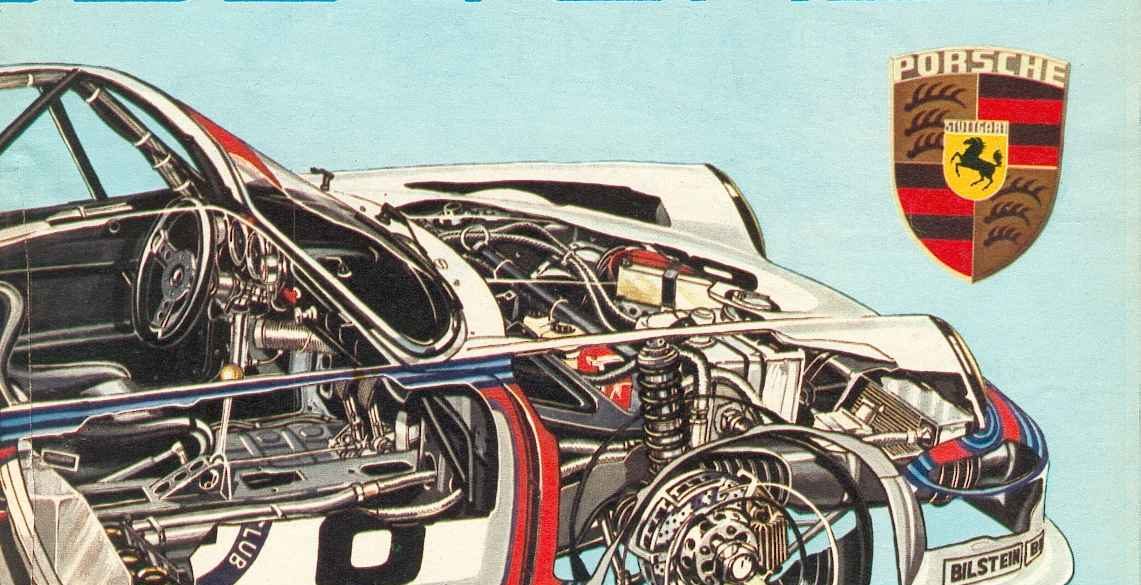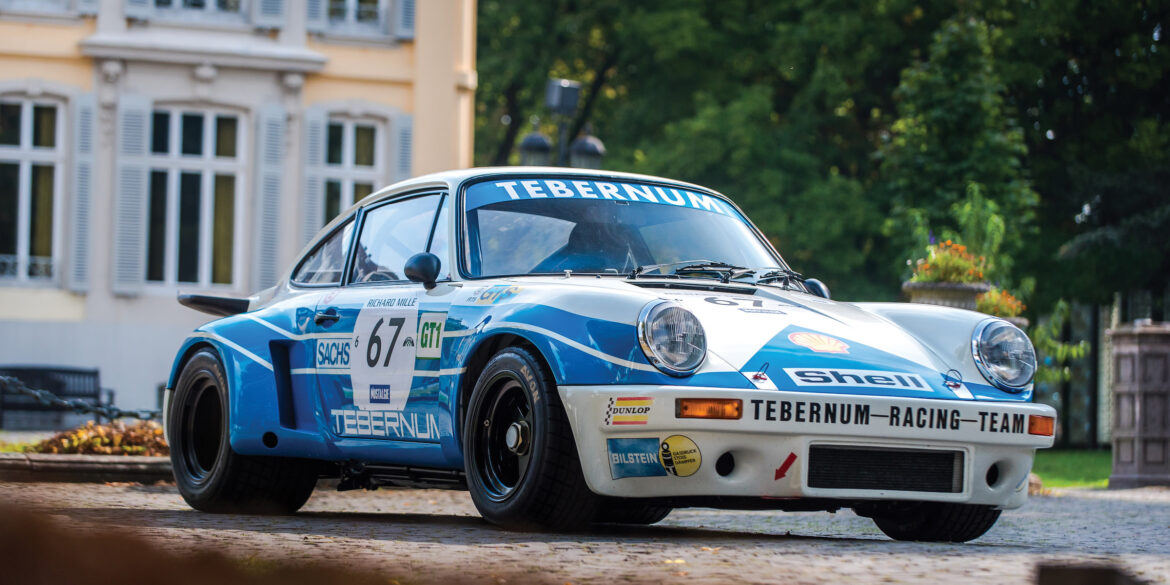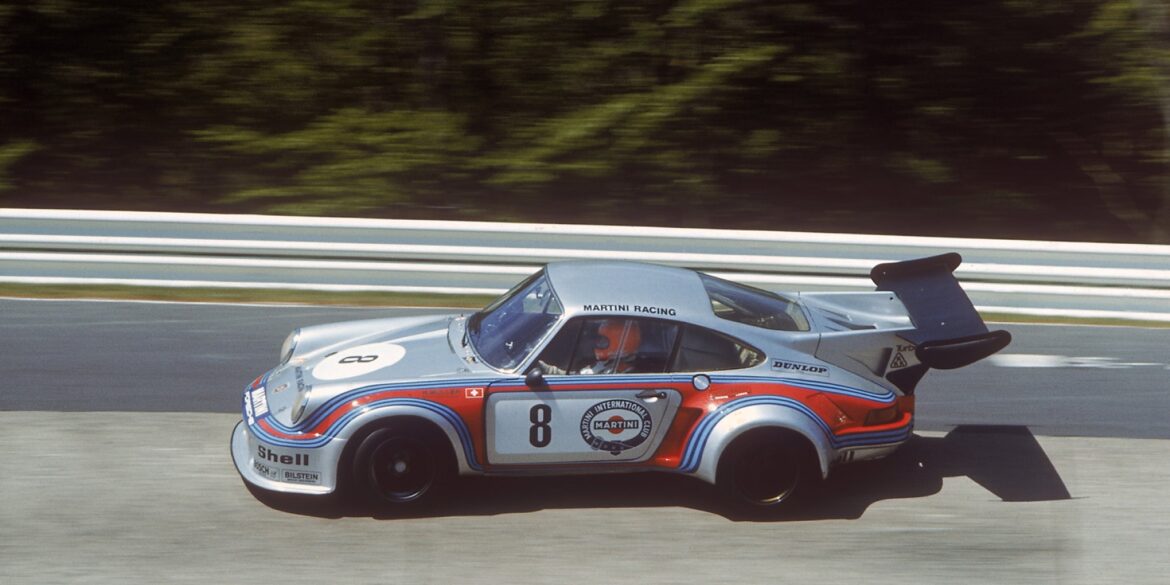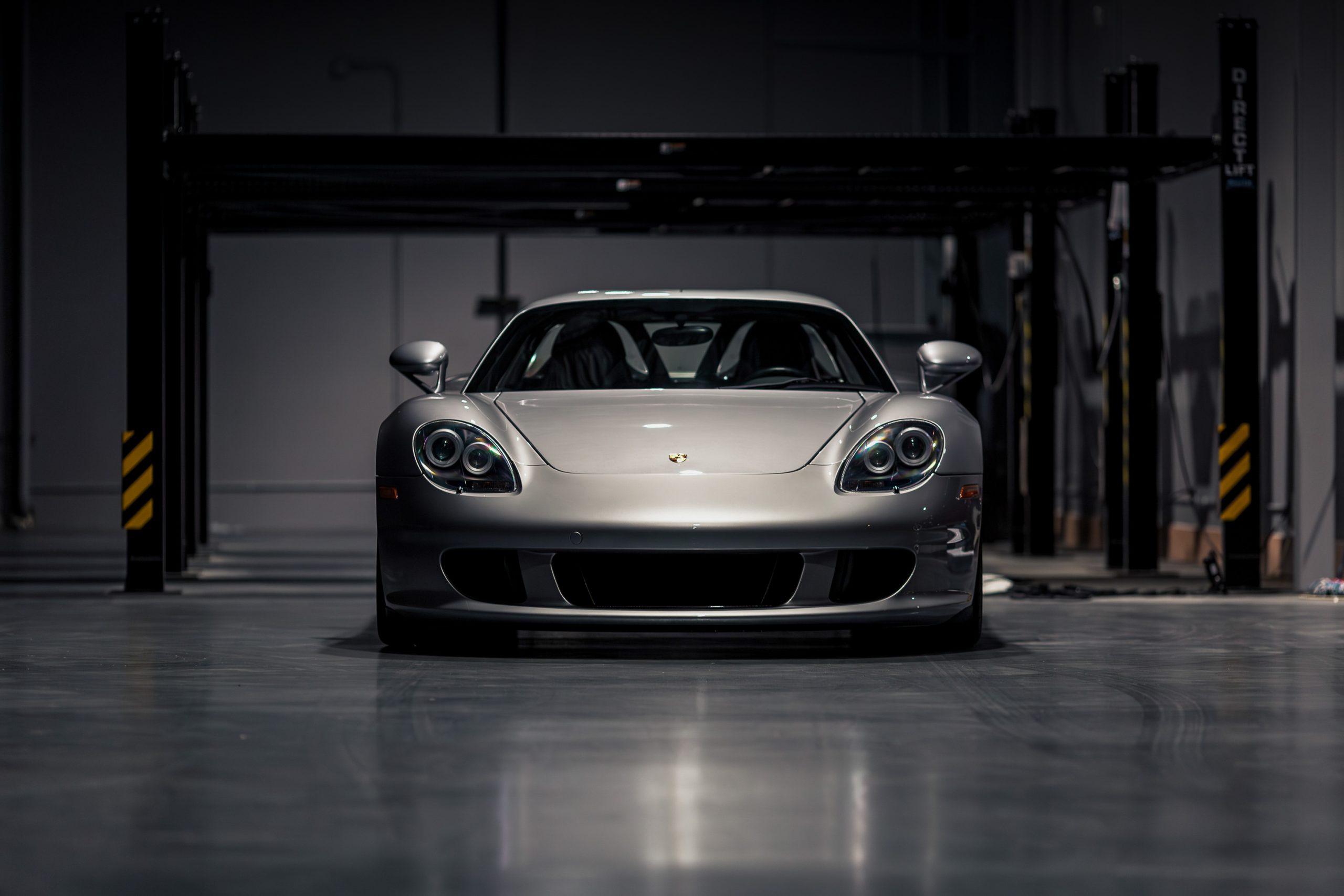A rare 1973 Porsche 911 Carrera 2.8 RSR will be offered at Bonhams Cars on October 12, with an estimated value of up to $1,800,000. One of only 49 built and the 30th example produced, it is one of just two finished in black. This example has significant provenance, having...
Launched in 1993, the Carrera RSR 3.8 was designed as a ready-to-race variant of the Carrera RS. Sharing the RS’s widebody shell, it featured an aluminum hood, lightweight doors, thinner side and rear glass, and an adjustable rear wing. Powering the RSR 3.8 was an air-cooled, naturally aspirated six-cylinder Type...
The Porsche 911 Type 964 RSR, designed for international GT racing by privateers, represents a significant evolution in the 911 series, first introduced in 1989. Available in two versions, the Carrera 4 and Carrera 2, it marked Porsche’s first use of four-wheel drive in a production model, drawing on technology...
More than a Carrera 2.7 RS The Carrera RS was introduced in 1973 and homologated for Group 4 GT racing, with only 55 examples of the legendary and ultra-lightweight racing variant Carrera RSR 2.8 produced (RennSport Rennwagen), with many special features, including the highly tuned 2.8L flat-six, 5cm-wider front and...
The life of Jonkheer Gijsbert “Gijs” van Lennep is by no means short of special moments. In 1971, he won the legendary 24 Hours of Le Mans in a Porsche 917, repeating the feat in 1976 in the Porsche 936. He drove in Formula 1 and won the sports car...
Most Porsche fans know little about this epic wide-bodied 911 based race car. While the iconic 2.7 RS is every fan boys dream car, the RSR is the whole reason for the RS’s existence in the first place so we are dedicating some space here to tell you all about it. Introduced in...
Every so often, Porsche creates a short production run of cars that celebrates the attributes of one of their special models. In 1993, the Stuttgart engineers decided to develop a race version of their 911 Type 964 Carrera RS, aptly named the Carrera RSR 3.8, and aimed it squarely at...
The Carrera RSR 3.0 stands as a rare gem among Porsches, renowned as one of the most triumphant Group 4 racing cars. Originally built in limited quantities for motorsport, it emerged in the mid-1970s as the prime choice for privateers seeking victory, especially at events like the prestigious 24 Hours...
The Carrera RSR 3.0 is one of those rare and super-special Porsches, and one of the most successful Group 4 racing cars ever. Today the Carrera RSR models rank among the most sought after of all Porsche 911 variants. The Carrera RSR 3.0 was made in small numbers for racing. For the privateer in...
Bonhams will auction one of the two existing examples of the Porsche 911 Carrera RSR 3.8-liter “Strassenversion” Coupé on November 25 during its “On The Grid – The Abu Dhabi Auction.” In 1992, Porsche introduced the 964 Carrera RS, a lightweight variant reminiscent of the legendary 2.7 and 3.0-liter RS...
The Carrera RSR 3.0 is one of those rare and super-special Porsches, and one of the most successful Group 4 racing cars ever. Today, the Carrera RSR models rank among the most sought after of all Porsche 911 variants. The Carrera RSR 3.0 was made in small numbers for racing. For the privateer in...
Every so often, Porsche creates a short production run of cars that celebrates the attributes of one of their special models. In 1993, the Stuttgart engineers decided to develop a race version of their 911 Type 964 Carrera RS, aptly named the Carrera RSR 3.8, and aimed it squarely at...
The original idea for this “special” feature had been to do a test on Porsche’s famed Moby Dick…the 935/78 long-tail beast from 1978, the company’s first racecar with water-cooled cylinder heads. However, that particular machine was on tour in China and not due back at the Porsche Museum in Stuttgart...
This 1970 Porsche 911 is a one-of-a-kind creation commissioned by Orbit Racing for a complete RSR/outlaw-style restoration, resulting in an uncompromising custom build. The car has undergone a full refinish, now sporting a modern Audi color of Nardo Grey with black trim pieces, creating a monochromatic look. The 911 boasts...
Most Porsche fans know little about this epic wide-bodied 911 based race car. While the iconic 2.7 RS is every fan boys dream car, the RSR is the whole reason for the RS’s existence in the first place so we are dedicating some space here to tell you all about it. Introduced in...
When the idea came up of producing a series of race cars for the mainly-amateur racers who drove such GT vehicles in the early 1970s, the factory management was skeptical as to whether it would prove to be a profitable venture. After all, the factory had been in this line...
A compilation video of the 2022 Bernina Gran Turismo hillclimb race winner, the beautiful Porsche 911 Carrera 3.0 RSR ‘IROC’ driven by Florian Fuestel....
Join Harm Lagaajj as he drives the legendary Porsche 911 Carrera RSR Turbo on the Zandvoort circuit. Enjoy the soundtrack of the 3.0-liter engine as it zooms around the track....
This particular 911 was built to serve as a tribute to legendary Carrera RSR race cars of the 1970s that competed in the IROC series. As its name suggests, this Porsche comes with a full IROC-style body conversion, custom interior, upgraded brakes and suspension, and an overhauled 3.0-liter twin-plug engine....
When I’m not helping to sell the occasional old race car, or visiting old race car meetings, I’ve usually got my head down, researching various projects for clients, usually to do with Porsches—although Lola T70s and the like often pass my way too. Probably the most interesting project that I’ve...
Ed note: The history of specific chassis used in notable races decades ago can be hard to verify but are significant to fans of Porsche and vintage racing enthusiasts. Information presented are the thoughts, data, and opinions of the author. Enjoy! This is the story of what happened to a...
1973 Porsche 911 Carrera RSR 2.8 Technical Specifications Built At Stuttgart, Germany Price $ $22,500 Engine Flat 6 Valve Train SOHC Displacement 2806 cc / 171.2 in³ Bore 92.0 mm / 3.62 in Stroke 70.4 mm / 2.77 in Compression 10.3:1 Power 300 bhp @ 8000 rpm Specific Output 99.79...
Straight exhaust fly-by’s & downshifts Is there anything better than watching (and listening) to an aircooled RSR 3.0 hammering on a track? Nope, didn’t think so....
1974 – 1975 Porsche 911 Carrera RSR 3.0 Pictures & Gallery ...
1974 -1975 Porsche 911 Carrera RSR 3.0 Technical Specifications Engine Configuration 911/75 B6 Location Rear, longitudinally mounted Construction magnesium alloy block and head Displacement 2,996 cc / 182.8 cu in Bore / Stroke 95.0 mm (3.7 in) / 70.4 mm (2.8 in) Compression 10.5:1 Valvetrain 2 valves / cylinder, SOHC...
1974 Porsche 911 Carrera RSR Turbo 2.1 Technical Specifications Engine Location Rear Drive Type Rear Wheel Body / Chassis Monocoque chassis and Fiberglass body Model Years 1974 Weight 1808 lbs / 820.095 kg Engine Turbocharged Flat 6 | 911/76 B6 Displacement 2142 cc / 130.7 cu in. / 2.1 Liters...
The IROC Porsches: The International Race of Champions, Porsche’s 911 RSR and the Men Who Raced Them by Matt Stone © Motorbooks This is the story of the International Race of Champions Porsche Carrera 911 RSRs and the drivers who raced them. It’s a story that is long overdue, as...
Porsche 911 Carrera RSR (1974) by Historika – Monza Historic 2020 + OnBoard, 3-Litre Flat-Six Sound! This great and original 1974 Porsche 911 Carrera RSR, chassis 0060015, took to the track in the 2020 edition of the Monza Historic by Peter Auto. Prepared by Historika Klassik Porsche, competes with Andrew...
Sublime Or Sacrilege? ‘If you want to build something, build it how you want it.’...
Daytona 24 Hours, 3-4 February 1973: The start 1973 Daytona 24 hours led by John Watson in the Mirage on pole 1973 saw a return to normality for the Daytona 24-hour race. The distance was set back at 24 hours, after running only a 6-hour length in 1972. Ferrari in...
Best of Porsche Rally Cars...
1974 Porsche 911 Carrera RSR Turbo 2.1 (chassis #911 460 9101) photographed at the Porsche Museum, Stuttgart, Germany, May 2019 The year 1974 will be remembered for many different reasons, depending on where you were living in the world at the time and what caught your eye. For instance, Richard...
A Unique Tribute From its humble beginnings, this 1970 911 enjoyed a varied life, most notably as a rather tasty ‘73 RS replica. It was running well, and beating most-everything off the line around the New-South Wales area of Australia, right up until the 3.0 SC engine gave up with...
On Board Hot off the heels of the unveiling of the new Porsche 911 RSR, we’re looking back with the classic 1973 Porsche 911 Carrera RSR charging up a wet hill at Festival of Speed...
POV Drive In A Porsche 911 3.0 Carrera RSR Factory Porsche racer Patrick Long has a million-dollar historic 911 3.0 Carrera RSR from 1975 to pedal, less than half the horsepower of the fastest cars in the class, and uses every ounce of talent and racecraft he owns in a...
Le Mans 24 Hours, 23-24 June 1951: In the foreground of the workshop at Teloché is the #46 Porsche 356 SL driven by Edmond Mouche and Auguste Veuillet, while in the background is the #47 Porsche 356 SL which was damaged in practice by Rudolph Sauerwein Porsche has been represented...
Long Beach, IMSA WeatherTech SportsCar Championship, 14 April 2018: #912 Porsche 911 RSR of Laurens Vanthoor and Earl Bamber bounces over the kerbs during the race The efforts of the factory Porsches over the weekend came to naught, as the two 911 RSRs finished well down the order in the...
#5 Porsche 908/3 – Juan Fernandez/Francesco Torredemer/Eugenio Baturone – NRF The 1972 season broke, ushering in with it a new era of racing. The Porsche 917 had reigned supreme for two years, but the race authorities (read FIA) had had their fill of Porsche interpreting the rules their way, and...
Great sound, great engine! Filmed at Circuit Spa-Francorchamps, Zolder and the Nürburgring between 2011-2017. Great compilation of on-track fun in a bunch of 911 RSR 3.0 racecars....
Every so often, Porsche creates a short production run of cars that celebrates the attributes of one of their special models. In 1993, the Stuttgart engineers decided to develop a race version of their 911 Type 964 Carrera RS, aptly named the Carrera RSR 3.8, and aimed it squarely at...
No Subscription? You’re missing out Get immediate ad-free access to all our premium content. Get Started Already a Member? Sign in to your account here....
1974 Porsche 911 Carrera Turbo 2.1 Pictures & Gallery...
No Subscription? You’re missing out Get immediate ad-free access to all our premium content. Get Started Already a Member? Sign in to your account here....
Carrera RSR 3.0 Sounds Spectacular Porsche 911 Carrera RSR 3.0 in action! Natural Sound. 1974 Porsche 911 RSR 3.0 a historic Race car of Le Mans 24 Hours! 182.7 cu in. | 3.0 L. – 315 BHP (231.84 KW) @ 8000 RPM. Drivers: #96 – Santiago ORJUELA / Juan ORJUELA...
The body of the first experimental chassis, 9113600576-R5, was modified from a 911 Carrera RSR 2.8 and lacked a sophisticated aerodynamic package. The chassis was equipped with a 911/76 engine producing approximately 500 hp. In this configuration, the car weighed up to 750 kg....
With the 1993 Carrera 2 as the starting point, Porsche had to make at least 50 roadgoing cars in order to qualify this new model for the Carrera ADAC GT Cup, which served as the basis for a motor racing variant to come, the Carrera RSR 3.8. The RSR 3.8 was nothing short of an all-out race car that could be delivered to the track in a ‘just add driver’ form. The Porsche Carrera RSR 3.8 racked up a catalogue of impressive international race results right from the outset, winning overall at the Spa 24 Hours, Suzuka 1000km, and the 24 Hours of Interlagos.
For the 1974 racing season 911 Carrera RSR 3.0 (246 kW) and RSR Turbo 2.1 (338+ kW) were created - the 3.0L for the customer teams and the 2.1 turbo for Porsche’s own team. The Carrera RSR 3.0 was made in small numbers for racing. The 3.0 RSR would go on to become the most successful Group 4 racing car of its time thanks to its combination of low weight, immense Porsche 917 brakes, impeccable handling, and a 330+hp naturally aspirated flat-6.
For 1974 both the 911 Carrera RSR 3.0 and RSR Turbo 2.1 were created - the 3.0L for the customer teams and the 2.1 turbo for Porsche’s own team. The 911 Carrera RSR Turbo 2.1 developed 338-368 kW in power, but as the engine was small, the turbo lag was big and it wasn’t as easy to drive out of the corners as it was with the 3-litre normally aspirated car. Weight reduction measures included plastic hoods, fender flares and doors and an aluminium safety cage.
Introduced in 1973, the RSR was a factory-built racing car based on the 911 chassis. The Porsche 911 Carrera RSR 2.8 was the first 911 to ever wear the RSR badge. Homologated for racing by the iconic 1973 Porsche 911 Carrera RS, the RSR’s racing career got off to the perfect start thanks to Brumos Racing’s overall triumph in the 1973 24 Hours of Daytona, while a factory car won the latest ever Targa Florio road race. For the privateer in the mid-1970s who wanted to go sports car racing this was the chosen weapon.


